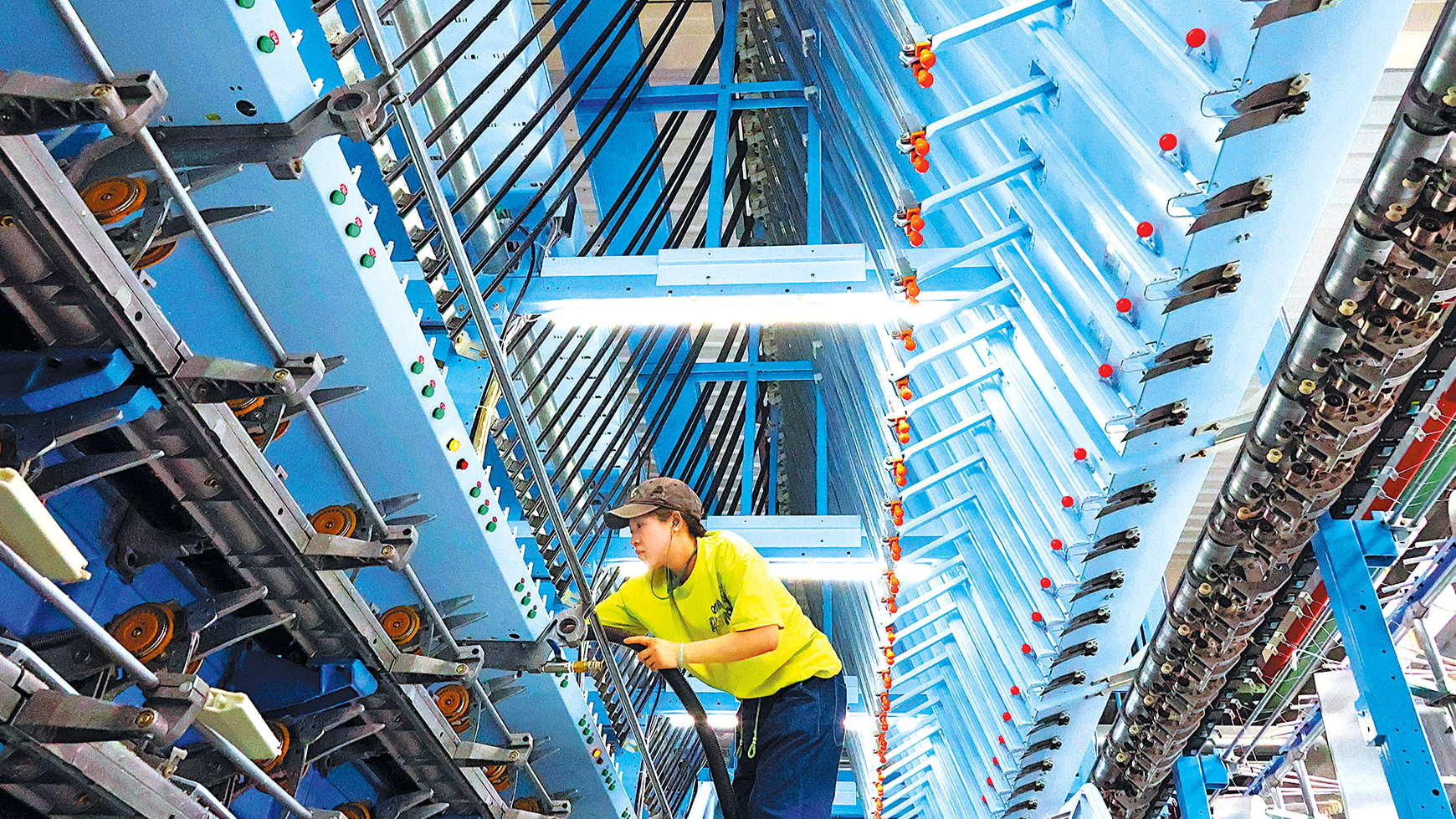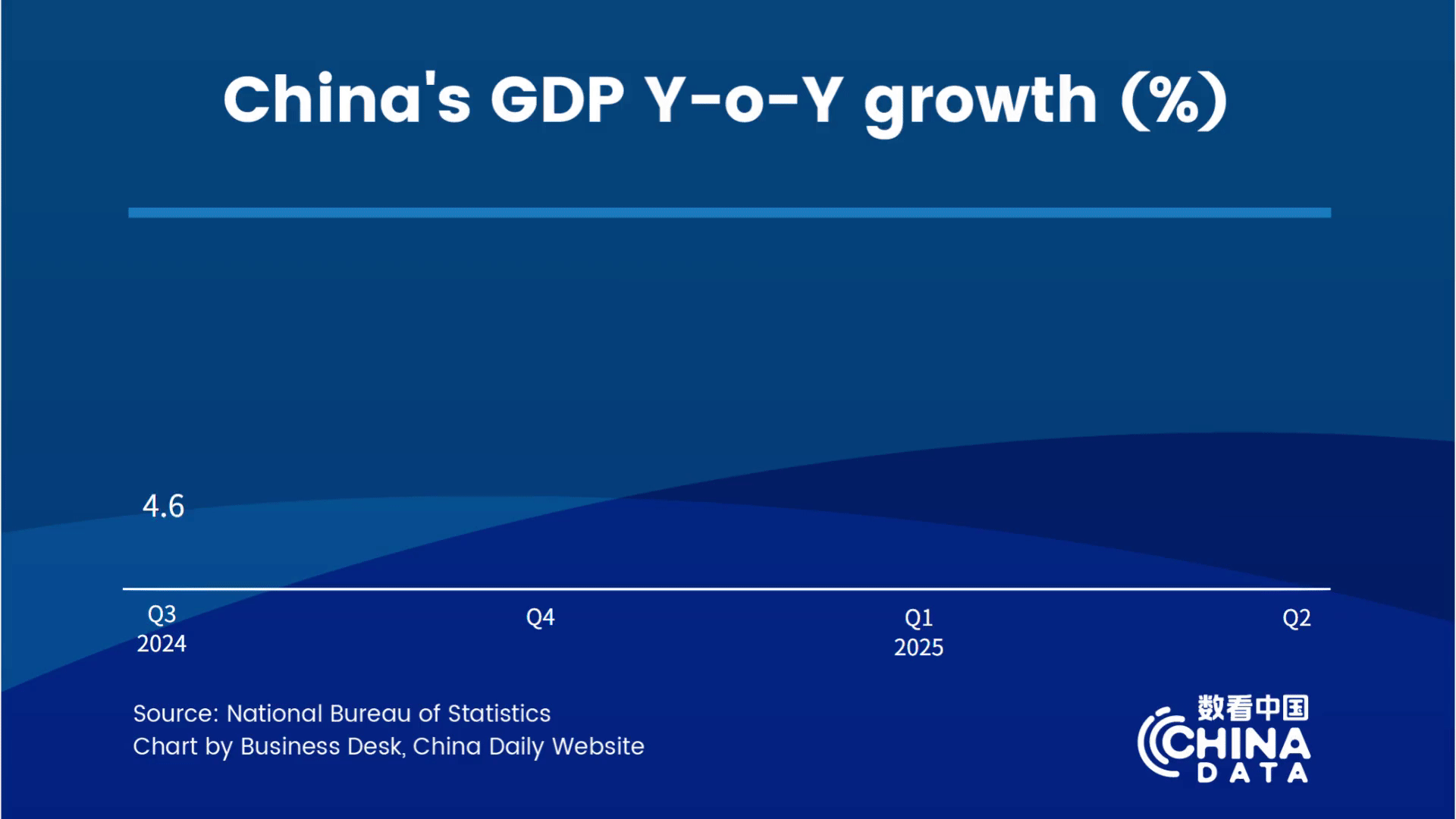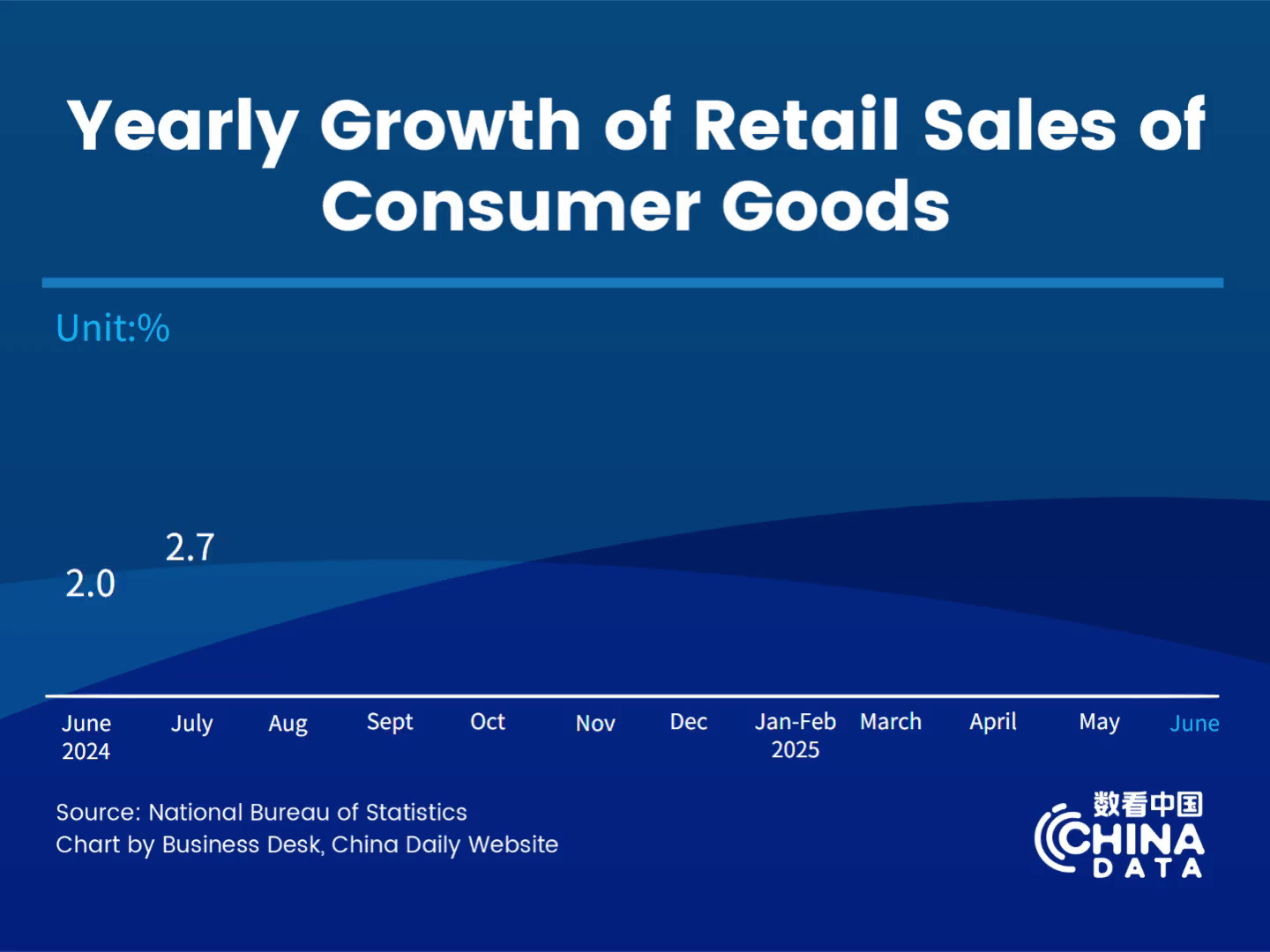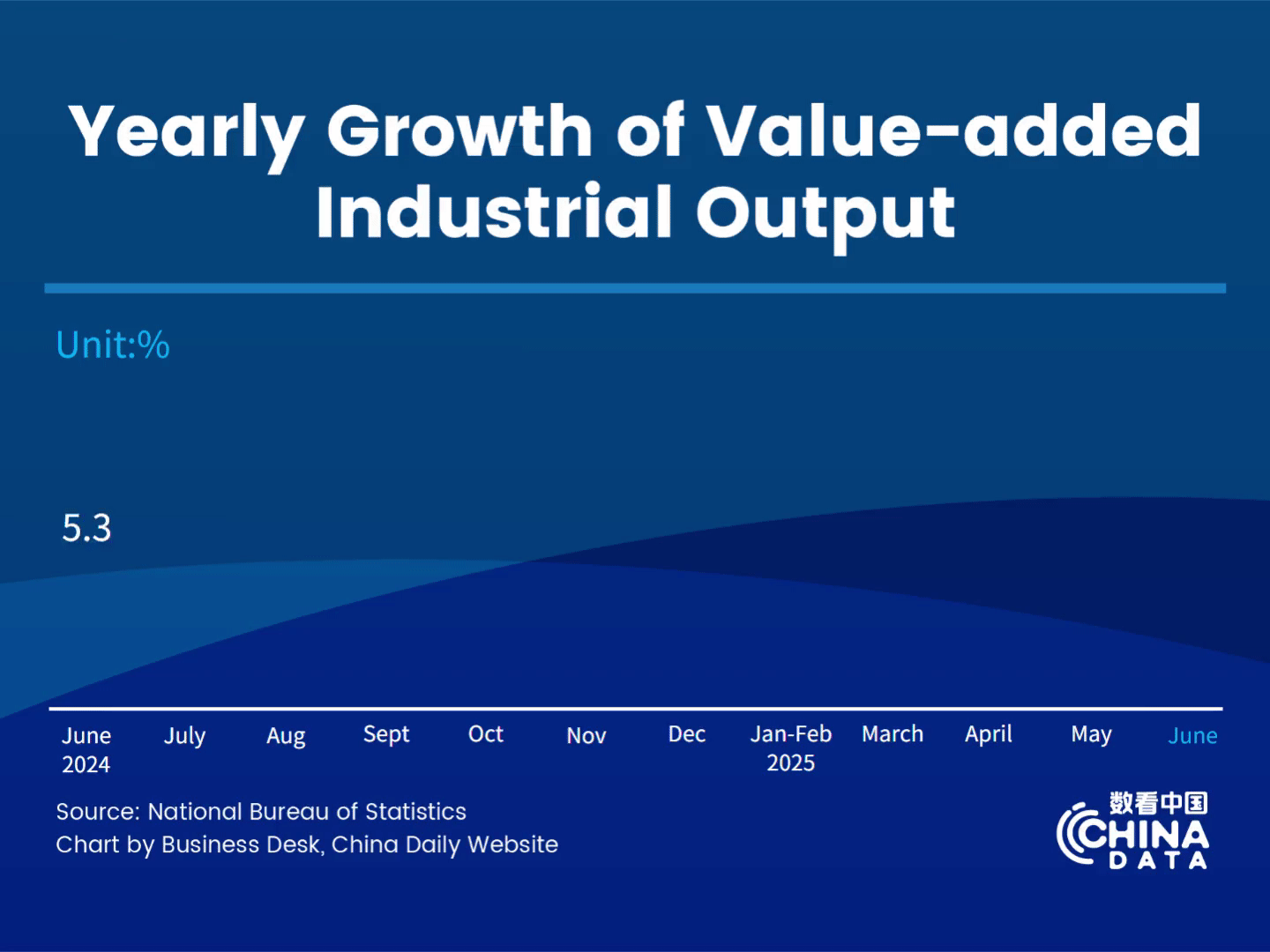
BEIJING - China's gross domestic product (GDP) grew 5.3 percent year-on-year in the first half of 2025, data from the National Bureau of Statistics (NBS) showed Tuesday.
China's GDP reached around 66.05 trillion yuan (about $9.24 trillion) in the first half, NBS data showed.
In the second quarter, the country's GDP expanded 5.2 percent year-on-year, according to the NBS.
The tertiary industry expanded 5.5 percent year-on-year in the first half, outpacing a 3.7 percent increase in the primary industry and a 5.3 percent increase in the second industry.

On a quarterly basis, China's economy expanded 1.1 percent in the second quarter, according to the NBS.
Since the beginning of the year, China has accelerated the implementation of a more proactive macroeconomic policy. The economy has made steady progress despite pressures, with significant economic indicators performing better than expected, said Sheng Laiyun, deputy head of the bureau, at a press conference on Tuesday.
Sheng described the economic performance in the first half as "highly valuable," marked by continued progress and a positive trend built on overall stability.
"This is a hard-won achievement, especially given the sharp changes in the international environment and increased external pressures since the second quarter," Sheng added.
Retail sales
China's retail sales of consumer goods, a major indicator of the country's consumption strength, expanded 5 percent year-on-year in the first half of this year. The pace is 0.4 percentage points faster than the growth recorded in the first quarter, according to the NBS.
In the first six months, China's total retail sales of consumer goods reached about 24.55 trillion yuan (about $3.43 trillion), the NBS data showed.

Driven by a series of policies aimed at promoting consumption and expanding domestic demand, China's consumer market sustained sound momentum of growth in the first half of the year, Sheng said.
Retail sales in the country's urban regions rose 5 percent year-on-year in the first half of 2025, while those in rural areas expanded 4.9 percent. Online retail sales went up 8.5 percent year-on-year.
Backed by the government's consumer goods trade-in program, retail sales of home appliances and audiovisual equipment surged 30.7 percent year-on-year in the January-June period, and sales of cultural and office goods jumped by 25.4 percent.
ALSO READ: China's economy on steady upward trend amid external challenges, says official
In June alone, China's retail sales of consumer goods increased by 4.8 percent year-on-year.
Domestic demand contributed 68.8 percent to GDP growth, with final consumption expenditure contributing 52 percent, serving as the main driver of economic growth, Sheng said.
He noted that policies to promote consumption will be further strengthened in the second half of the year.
Industrial output
The country's value-added industrial output grew at a faster pace in June, up 6.8 percent year-on-year, as the world's second-largest economy stepped up efforts to support growth despite challenges both at home and abroad.
The growth accelerated from a 5.8 percent rise in May. In the first six months of this year, China's industrial output increased by 6.4 percent compared to the same period last year, according to NBS data.

The industrial output is used to measure the activity of large enterprises, each with an annual main business turnover of at least 20 million yuan (about $2.8 million).
A breakdown of the data showed that the manufacturing sector's value-added output increased by 7 percent year-on-year during the January-June period, while that of equipment manufacturing and high-tech manufacturing expanded by 10.2 percent and 9.5 percent, respectively, according to the NBS.
The production of 3D printing equipment, new energy vehicles, and industrial robots surged 43.1 percent, 36.2 percent and 35.6 percent year-on-year during the period, respectively.
Fixed-asset investment
Data from the NBS also showed that the country’s fixed-asset investment maintained stable growth in the first half (H1) of 2025, with high-tech sectors attracting surging capital inflows.
Total investment rose 2.8 percent year-on-year to 24.87 trillion yuan (about $3.48 trillion) during the period, the NBS said.
Investment in infrastructure construction went up 4.6 percent from a year ago during the January-June period, while manufacturing investment increased 7.5 percent.
ALSO READ: China's GDP expands 5.4% year-on-year in Q1
In particular, investment in high-tech industries posted stellar increases. Investment in information services, aircraft and spacecraft manufacturing, and computer and office equipment manufacturing climbed 37.4 percent, 26.3 percent, and 21.5 percent year-on-year, respectively.
Excluding the property sector, the country's fixed-asset investment climbed 6.6 percent compared with a year earlier in H1. Meanwhile, investment in property development fell 11.2 percent.
Private investment edged down 0.6 percent from a year ago in the first six months. If stripping out real estate, private investment gained 5.1 percent.
Disposable income
Official data showed that the country’s per capita disposable income posted solid growth in the first half of 2025, amid continued signs of economic recovery despite external uncertainties.
China's per capita disposable income stood at 21,840 yuan (about $3,055) in the first six months of this year, up 5.3 percent year-on-year in nominal terms, while representing an increase of 5.4 percent after deducting price factors, the NBS said.

Median per capita disposable income nationwide was 18,186 yuan in H1, a nominal increase of 4.8 percent year-on-year. Incomes of rural residents, up 5.9 percent year-on-year in nominal terms, grew faster than incomes of city dwellers, who enjoyed an increase of 4.7 percent during this period.
China's per capita consumption expenditure came in at 14,309 yuan -- up 5.2 percent year- on-year in nominal terms, and increasing by 5.3 percent after deduction of price factors.
Job market
The country's job market remained generally stable in the first half of 2025, with the surveyed urban unemployment rate averaging 5.2 percent, down 0.1 percentage points from the first quarter, according to official data.
In June, the surveyed urban unemployment rate was 5 percent, according to the NBS.

As of the end of June, the total number of rural migrant workers increased by 0.7 percent year-on-year to 191.39 million.
"The monthly surveyed urban unemployment rate has fluctuated between 5 percent and 5.4 percent this year, remaining relatively stable," Sheng said.
China has set a target for a surveyed urban unemployment rate of around 5.5 percent in 2025 and aims to create over 12 million new urban jobs.


